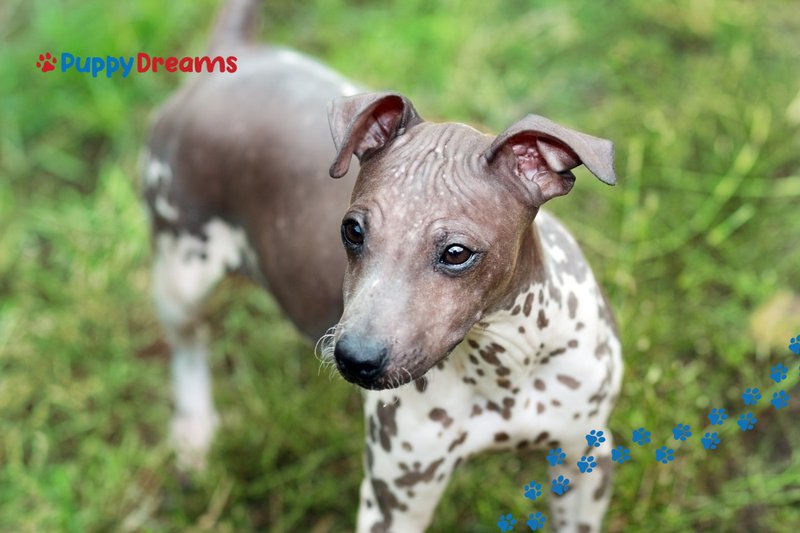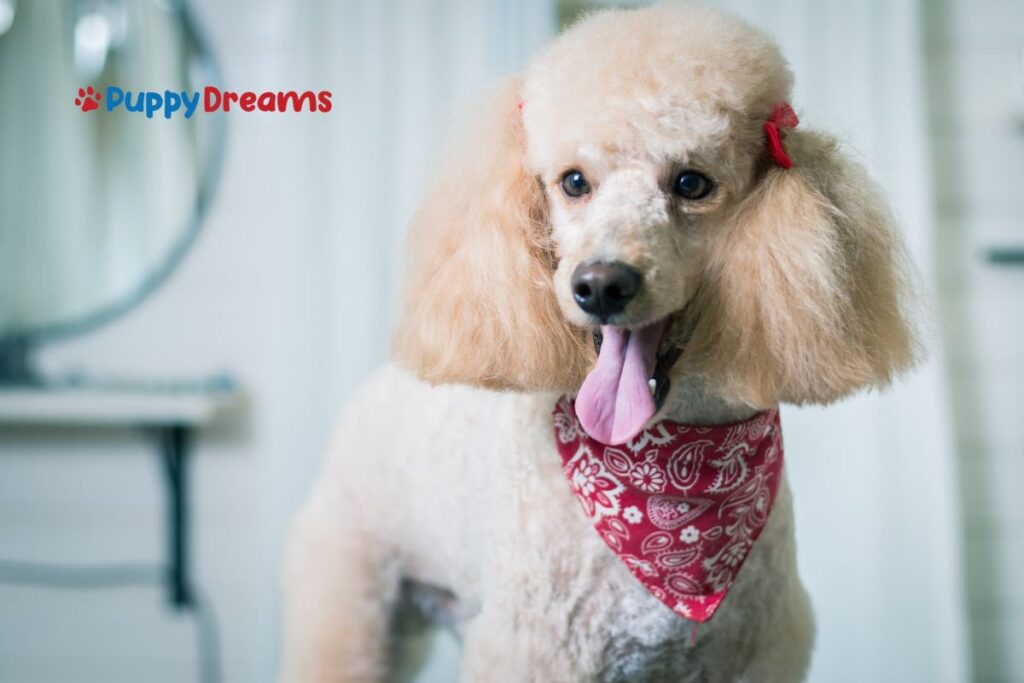If you have dog allergies, non-shedding breeds can sound ideal. But are they really the answer? Not all “non-shedding” dogs are alike, and no dog is completely allergy-free. This guide clears up common myths, explores smart options, and helps find a companion that matches home and health needs.
Key Takeaways:
- "Non-shedding" dogs shed less fur but still produce dander, the main cause of allergies.
- Dander also comes from saliva and urine and can float in the air.
- Non-shedding dogs often require more grooming to prevent mats and control allergens.
- Small hypoallergenic breeds: Bichon Frise, Maltese, Havanese, Toy Poodle, Yorkshire Terrier.
- Medium breeds: Portuguese Water Dog, Soft-Coated Wheaten Terrier, Lagotto Romagnolo, Puli, Basenji, Tibetan Terrier.
- Large hypoallergenic breeds: Giant Schnauzer, Standard Poodle, Afghan Hound, Irish Water Spaniel, Komondor, Labradoodle.
- Low-grooming hypoallergenic pets: American Hairless Terrier, Xoloitzcuintli, Basenji, Whippet.
- Best for apartments: Maltese, Mini Schnauzer, Bolognese, Poodle mixes, Shih Tzu, Coton de Tulear.
- Kid-friendly hypoallergenic breeds: Poodle, Portuguese Water Dog, Labradoodle, Bichon Frise, Coton de Tulear.
- Doodles vary; wool coats shed least; meeting parents helps assess allergy risk.
- Grooming and home cleaning (HEPA filter, vacuum, bathing) are key to managing dog allergies.

What Does "Non-Shedding" Really Mean in Dog Breeds?
People often think non-shedding dogs won’t cause allergies. That’s not entirely true. Dog allergies are mostly triggered by dander—not fur. Dander is tiny skin flakes that come off a dog’s body. Proteins in saliva and urine also cause reactions, and all stick to the dog’s coat. When a dog sheds, allergens spread more quickly.
“Non-shedding” means the fur falls out less often. But the dog still produces dander. Even dogs with hair instead of fur can cause sneezing and other symptoms.
Dander is lightweight and floats in the air. When dogs shed more, dander spreads faster. Non-shedding dogs keep more of it in their coat—but it’s still present. Less loose hair is visible, but allergen control is still necessary.
Many assume that non-shedding breeds are easier to maintain. This isn’t true. Poodles and Bichons, for example, have curly coats that trap old hair and dander. Without regular brushing, mats form, irritating the skin, and holding more allergens. Shaving the coat alone doesn’t solve the issue; skin and hair require ongoing care.
Around 10–20% of people in the U.S. are allergic to dogs. The National Institutes of Health explains that dander—not hair—is the top risk.
Hair grows longer than fur and holds more oil and dead skin. Unlike fur, it doesn’t fall out regularly. Dogs with hair may trigger fewer allergies, but need more maintenance. Examples include Bichon Frise, Poodles, and Portuguese Water Dogs. Proper grooming tools and schedules help reduce allergens.
Which Small Dog Breeds Are Best for Allergy Sufferers?
Small dogs that shed less release fewer allergens, making them a better fit for allergy-prone individuals.
- Bichon Frise: Cheerful, low-shedding, curly coat traps hair and dander; daily brushing recommended.
- Maltese: Long white hair grows like human hair, barely sheds; regular trims prevent mats.
- Havanese: Sheds very little, calm at home, fluffy hair, easy to manage.
- Toy Poodle / Yorkshire Terrier: Low-shedding coats; Toy Poodles have tight curls, Yorkies have fine hair; both require regular grooming.
- Doodles (Bichon-Poodle mix): Often inherit low-shedding coats, producing less dander.
Designer mixes like Schnoodles or Cavapoos often combine favorable coat qualities. Cavapoos are affectionate, and Schnoodles are playful. Coats typically help reduce dander, but spending time with the dog first is recommended, as no dog is completely allergy-free.
Are There Medium Hypoallergenic Dogs for Active Families?
Many medium-sized dogs shed less and suit active households. They interact well with children and enjoy outdoor routines.
- Portuguese Water Dog: Curly coat traps dander; requires exercise and weekly grooming.
- Soft-Coated Wheaten Terrier: Low-shed, shiny coat; brushing a few times a week.
- Lagotto Romagnolo: Wool-like coat, suitable for mild allergies; enjoys problem-solving and games.
- Puli: Corded coat locks in shed hair; energetic and needs space.
- Basenji / Tibetan Terrier: Minimal shedding; brushing once weekly; suitable for families with older children.
Meeting dogs beforehand is important to assess potential allergy triggers. For more information on scheduling a visit, contact Puppy Dreams near you today.
Can Large Non-Shedding Dog Breeds Suit Bigger Homes?
Large dogs can release fewer allergens and work well in spacious homes with consistent care.
- Giant Schnauzer: Wiry coat holds dander; grooming a few times weekly.
- Standard Poodle: Curly hair traps allergens; grooming every 4–6 weeks plus brushing.
- Afghan Hound: Flowing coat, low shedding, daily brushing recommended.
- Irish Water Spaniel: Thick, curly, water-resistant coat; weekly grooming required.
- Komondor: Long, corded hair; requires dedicated grooming.
- Mixed breeds (Labradoodle / Giant Goldendoodle): Curly coats shed less; meet parents to assess traits.
- Kerry Blue Terrier: Soft, curly coat; monthly grooming.
All require regular care, but fit homes where allergies are a concern.
Are Doodle and Designer Breeds Truly Allergy-Friendly?
Many doodles are low-shedding, but not all. Coat type—fleece, wool, or hair—affects allergen control. Wool coats usually shed the least and come from Poodle parents. Hair coats, from Retriever lineage, shed more. Meeting parent dogs helps predict puppy coat type.
Reliable low-shed doodles:
- Maltipoo: Maltese and Poodle mix
- Schnoodle: Poodle and Schnauzer mix
Curls trap dander and require regular brushing and baths. Skipping grooming can increase allergen exposure.
Which Hypoallergenic Dogs Require the Least Grooming?
Low-grooming, hypoallergenic breeds include:
- American Hairless Terrier: No fur, minimal grooming.
- Xoloitzcuintli (Mexican Hairless): Minimal care, occasional wipes or rinses.
- Basenji: Short coat, self-cleaning; weekly brushing.
- Whippet: Short-coated, easy-going; weekly brushing.
- Brussels Griffon / Lhasa Apso: Puppy cut reduces grooming needs.
Low dander and simple grooming help maintain a balance.
What Hypoallergenic Dogs Thrive in Apartment Living?
Small, low-shedding breeds are ideal for apartments:
- Maltese, Mini Schnauzer, Bolognese: Small, calm, shed very little.
- Shih Tzu, Poodle mixes, Coton de Tulear: Quiet, manageable energy, low allergens.
Meeting a dog first is recommended, as individual allergy responses vary.
What Are the Best Hypoallergenic Breeds for Children?
Gentle, low-shedding breeds work best with kids:
- Poodle, Portuguese Water Dog, Labradoodle: Smart, affectionate, holds dander in coat; regular grooming necessary.
- Bichon Frise: Sweet, light, daily brushing.
- Coton de Tulear: Soft, cuddly, minimal shedding; good with other pets.
Training and energy compatibility are key to a harmonious household.
How Should a Home Be Prepared for a Hypoallergenic Dog?
- Brush the dog 3 times a week; bathe every few weeks with dander-control shampoo.
- Clean couches, rugs,and curtains with a HEPA-filter vacuum.
- Use air purifiers with true HEPA filters.
- Wash dog bedding weekly in hot water.
- Spend time with the dog before bringing it home; allergy responses vary.
Proper grooming, cleaning, and testing can make living with a dog feasible even for allergy sufferers. For more information on caring for non-shedding dog breeds, explore t
Is There a Full List of Non-Shedding Dog Breeds?
Hairless Dogs: American Hairless Terrier, Xoloitzcuintli
Curly-Coated Dogs: Poodles, Lagotto Romagnolo
Wiry-Coated Dogs: Mini Schnauzers, Border Terriers
Mixed Breeds: Labradoodles, Goldendoodles, Maltipoos, Schnoodles
Sizes: Low-shedding dogs are available in every size. Large dogs (Irish Water Spaniel, Giant Schnauzer) suit spacious homes; small dogs (Maltese, Yorkies, Cotons) suit apartments.
No dog is completely maintenance-free, but proper grooming and home care reduce allergen exposure. Dander is the main concern, not fur.
Ready to Find Your Forever Pup?
Managing allergens effectively allows for a happy home with a non-shedding or low-shedding dog. Choosing the right breed, grooming, and cleaning routines ensures healthier living for everyone. Contact us today to find the puppy that is right for you.

